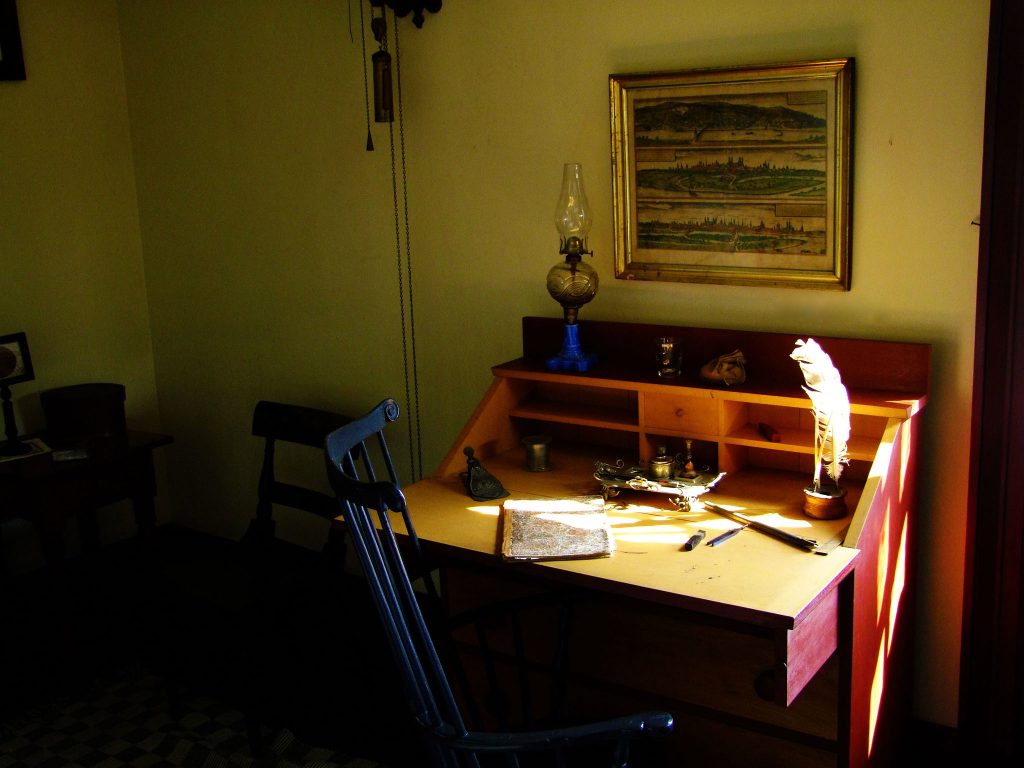As a writer I sit a lot, often in front of a computer screen, but sometimes with only a journal and a pen in hand, trying to write my novel Dismantle The Sun. A novel, I’m quickly realizing, requires from its author a level of patience and concentration that few other artistic creations demand so wholeheartedly. I’ve been told by more than one writer friend that to write a novel you must every day chain yourself to your chair for as long as necessary. So that’s what I do. I sit. On average I might spend eight hours sitting—though four of those hours I’m probably checking Facebook. A few months ago a friend posted this article by Susan Orlean about the perils of sitting and how sitting can cause obesity, high blood sugar, blood pressure, excess body fat. While reading, my initial thought was, “Wow. This is proof! My job is killing me.” I became overwhelmed by a certain kind of panic that felt to me very American— only those who live in privileged countries, after all, have to the time to worry about how many hours they are sitting during the day.
As awareness about the perils of sitting raises, fitness magazines and blogs have started advertising more tools to combat the massive asses we acquire from sitting: treadmill desks, portable elliptical trainers, pedometer watches that can track how long we stand, how well we sleep, how far we’ve walked, etc. These days we have a range of technological devices to fight the consequences of the technological devices that made us lazier in the first place. I’m a little too broke to buy a treadmill desk so I’ve been trying to change my lifestyle in basic ways: standing more, going for walks. I must emphasize the word “trying.” I find standing easier to me than walking. Somehow I can never convince myself to leisurely walk without a specific destination or purpose in mind. I always have to be walking to somewhere. I don’t hate walking, but I don’t love it either.
When I was in college, my Composition professor gave the class an optional exercise. He encouraged us to take different routes to the same location and write down what we saw, with the idea, I suppose, that by the end of the week we’d have a collection of observations that we couldn’t have observed if we had walked the same route. He said this was important for us to do as writers, and I never did it. The concept of walking a different path to the same destination seemed not only foreign to me, but impractical. I had already found the quickest routes to my dorm, to the cafeteria, to my most frequented buildings on campus, the idea of straying from that path didn’t seem worth it.

Part of my reluctance to walk without destination, or walk perhaps the longer route might be because I grew up in a country that didn’t encourage it. In The Bahamas, there aren’t many sidewalks. In fact, the concept of a sidewalk being everywhere was not something that ever occurred to me. Sidewalks were only for shopping plazas. We didn’t walk places. We drove or had someone drive us in a car or bus. My mother for a few years tried walking, but she never walked around our neighborhood. She put on her black spandex and her Nike sneakers and circled our driveway over and over. Walking on the road hurt her feet. Move forward a few years to when I’m living in New York, and there are sidewalks everywhere. My city friends keep a fast pace that I find enviable and annoying. Most friends who have walked with me before, have seen my slow lumbering walk, and they they know I hate feeling left behind.
Ironically, a revelation about walking came to me the other day while I was playing a video game, Dishonored, which follows a fairly basic plot, save the empress’s daughter. The plot is nothing new, but the game’s concept is compelling and novel. Dishonored is a game designed in a way to allow multiple pathways, and the player on his avenging mission never has to kill anyone if he chooses to do so. For those who don’t play video games, I must stress how rare occurrence it is for a game to give you the option of whether you want to shoot a gun or raise a sword. Rarely does a game encourage you to think about the consequences of the mindless violence depicted in most games. While you play the game will frequently remind you to “Play Your Pathways,” a phrase reminding the player the number of ways you can complete the level’s objectives: You can run straight forward into the castle, you can climb rooftops, you can possess a rat and crawl through the tunnels. One of the lasting truths I’ve taken away from the game is the importance of exploring all possible pathways. By exploring these different pathways you can change the shape of the game and your experiences playing it. If you go one way you can stumble upon a conversation between a soon-to-be-married couple or you can run into a guard bullying a poor servant girl. The world is vast, and sometimes when you take different paths you really do observe experiences that change the way you interact with the world around you. It’s a lesson that transfers easily into real life, and it’s one helpful for novelists, who have to create fictional worlds that feel real and full.
I confess. I feel kind of silly publicly posting my revelation. I’m afraid of how firmly I lodge myself in fictional realities, how often I sit, how often I rely on technology. Is there anyone out there who feels the same way? Do you want to go for a walk?


